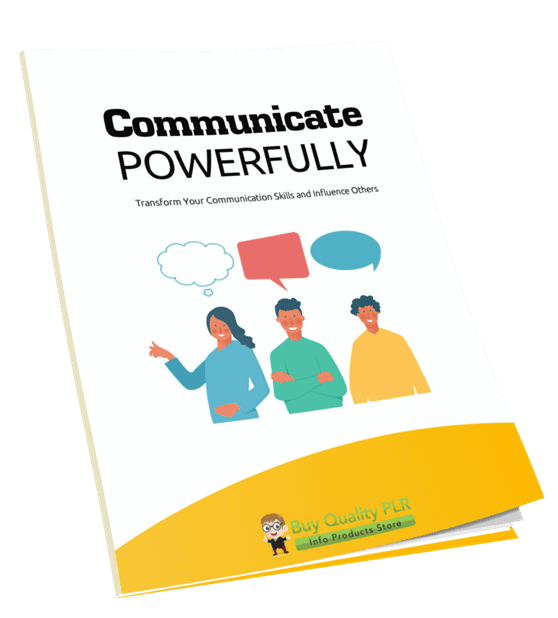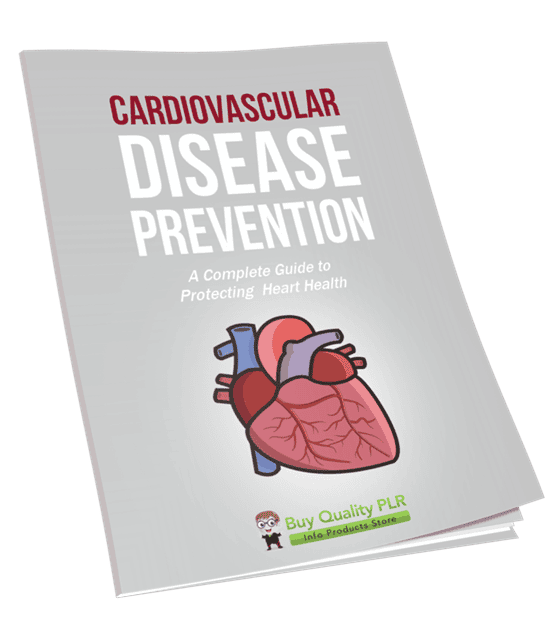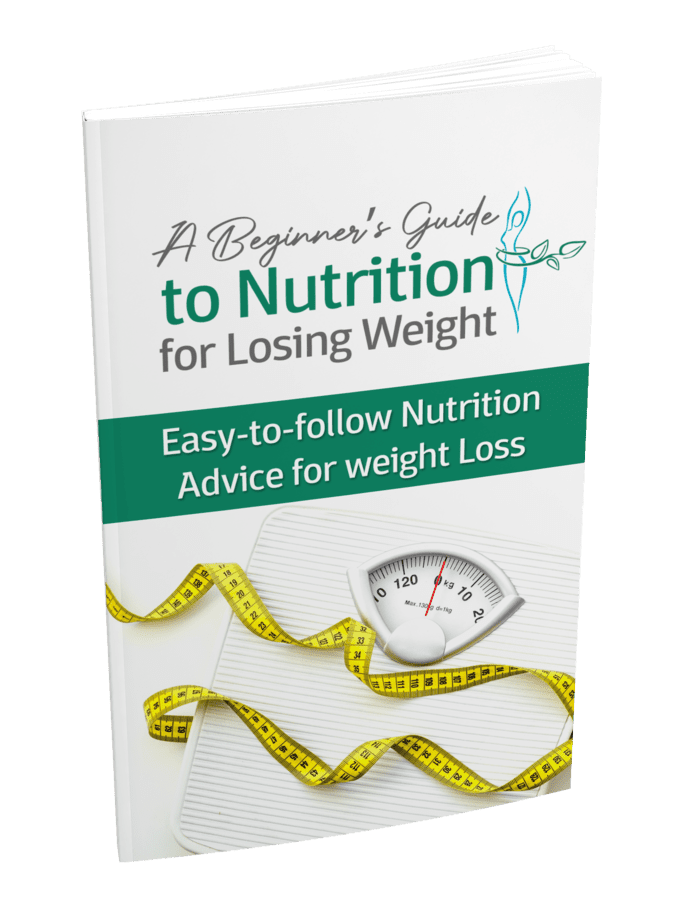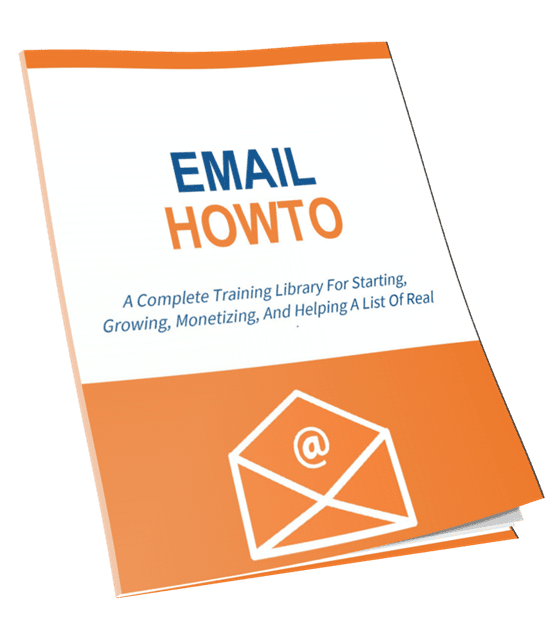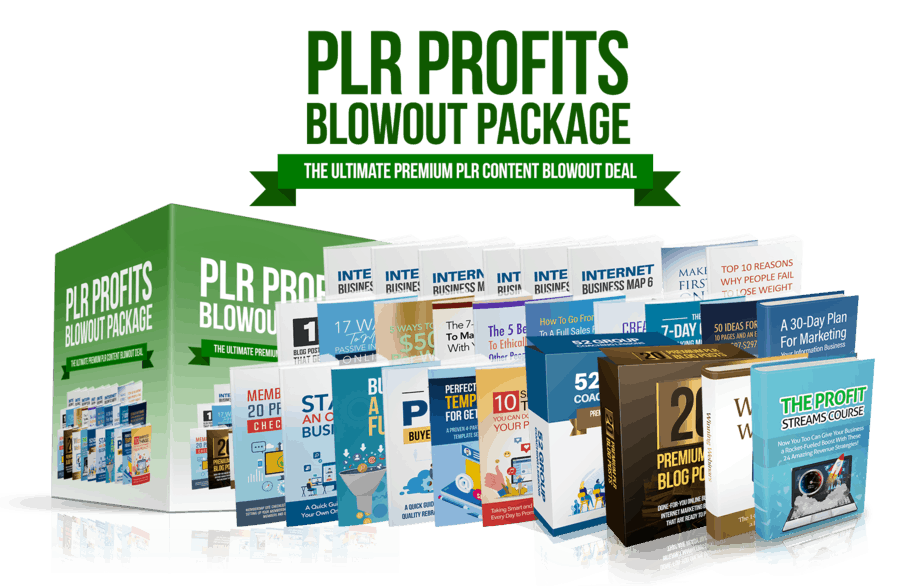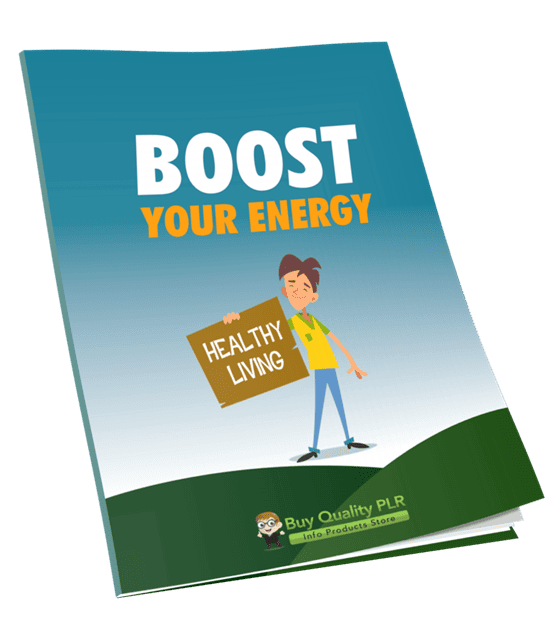
Boost Your Energy PLR Course 25k words
in Motivation PLR eBooks , PLR Checklists , PLR eBooks , PLR eCourses , PLR List Building Reports , Premium PLR , Premium PLR eBooks , Premium PLR Reports , Premium White Label Brandable PLR Coaching Courses , Private Label Rights Products , Self Care PLR , Self Help PLR , Self Help PLR eBooks , Self Improvement PLR , Self Improvement PLR Ebooks , Wellness PLR , Wellness PLR eBooksChoose Your Desired Option(s)
has been added to your cart!
have been added to your cart!
#boostyourenergy #energyboost #healthyliving #wellnesstips #stayenergized #fitnessmotivation #selfcare #healthandwellness #increaseenergy #plrcourse
Boost Your Energy PLR Course: Unlock Your Full Potential with Practical Strategies for Daily Energy!
Are you tired of feeling fatigued and drained, unable to fully enjoy your day or achieve your goals? It’s time to take control of your energy levels and revitalize your life with the Boost Your Energy PLR Course!
For just $14.99, you’ll get a 23,577-word course packed with science-backed strategies, expert advice, and practical steps to boost your energy from morning to night. Whether you’re looking to stay energized for work, exercise, or simply improve your daily productivity, this course is your ultimate guide to feeling vibrant and energized every single day!
Presenting…
Boost Your Energy PLR Course 25k words
What’s Included in the Boost Your Energy PLR Course?
The Boost Your Energy PLR Course is divided into 5 comprehensive modules, each designed to target a different aspect of your energy. From physical health and mental wellness to environment and long-term habits, this course covers everything you need to feel your best.
Module 1: Understanding Your Energy
- Discover What Drains Your Energy: Learn how to identify habits that deplete your energy and the daily activities that might be holding you back.
- Learn the Science of Energy: Understand how your body converts food into energy, and why sleep, hydration, and movement are key to feeling energized.
- Find Your Energy Peaks and Dips: Track your energy patterns and learn how to plan your high-energy tasks around your natural rhythm.
- Set Realistic Energy Goals: Break down your energy goals into small, achievable steps for long-term results.
Module 2: Energize Your Body
- Eat for Energy: Discover which foods fuel you for longer-lasting energy and which ones to avoid, like sugary snacks and excessive caffeine.
- Hydrate Like a Pro: Learn how much water you really need to stay energized, and how to enjoy hydration with added electrolytes or fruits.
- Move Your Body: Explore light exercises and energy-boosting activities like short walks, yoga, or stretches to increase blood flow and oxygen levels.
- Prioritize Rest and Recovery: Understand the importance of breaks, quality sleep, and relaxation techniques in maintaining your energy.
Module 3: Energize Your Mind
- Cultivate a Positive Mindset: Identify thoughts that drain your mental energy and learn how to reframe them with positivity and gratitude.
- Declutter Your Mental Space: Discover mindfulness techniques like meditation and deep breathing to calm your mind and reduce stress.
- Break the Stress-Energy Cycle: Learn how stress impacts your energy and explore activities to break the stress cycle.
- Stay Focused and Motivated: Stay productive and motivated with tools like to-do lists, time-blocking, and celebrating small wins.
Module 4: Optimize Your Environment
- Create an Energizing Workspace: Set up your workspace for maximum productivity and energy by eliminating distractions and adding energizing elements like plants.
- Maximize Natural Energy Boosters: Take advantage of natural sunlight, fresh air, and essential oils to improve your mood and energy.
- Minimize Energy Drainers: Eliminate noise distractions and set boundaries to protect your time and energy.
- Build Energy-Boosting Routines: Create powerful morning and evening routines that set you up for success each day.
Module 5: Long-Term Energy Habits
- Build Energy-Supporting Habits: Start small by choosing one habit each week, like eating breakfast or adding exercise to your day, and track your progress.
- Stay Flexible and Adaptable: Learn how to adjust your routines when life gets busy or stressful, and practice self-compassion when things don’t go as planned.
- Recharge Your Energy Regularly: Schedule regular self-care days to keep your energy levels high, and explore new activities to recharge.
- Reflect and Celebrate Your Progress: Track your improvements, no matter how small, to stay motivated and energized for the long term.
Bonus Features
Boost Your Energy Checklist – 501 Words
A simple checklist that summarizes the key steps from the course, giving you a quick reference for your energy-boosting strategies.
Boost Your Energy FAQs – 930 Words
A helpful FAQ section to answer common questions about energy levels, lifestyle changes, and how to keep your body and mind in top form.
Sales Page – 741 Words
A ready-to-use sales page that helps you quickly market and sell the Boost Your Energy PLR Course to your audience.
How to Use and Profit from the Boost Your Energy PLR Course
This Boost Your Energy PLR Course is packed with high-quality, practical content that you can easily customize to suit your business needs. Here are some ideas to monetize this course:
1. Sell the Course As-Is
Sell the entire course as-is to customers who are looking to improve their energy and productivity. It’s already a ready-to-sell product with great value.
2. Break it Into Smaller Reports
Split the course into smaller, easily digestible reports and sell them individually for $10-$20 each. Focus on popular topics like energy-boosting food, hydration, or mindfulness.
3. Bundle With Other Health and Wellness Content
Combine this course with other related PLR content (e.g., fitness guides, wellness habits, or healthy eating) to create a high-ticket bundle for $47-$97.
4. Create a Membership Site
Set up a membership site where you offer exclusive access to this course, along with additional tips and updates, generating monthly residual payments.
5. Convert it into a Multiple-Week E-Class
Transform this course into a multi-week e-class that you can sell for $297-$497. Add interactive elements like quizzes, assignments, and personalized support for an even better experience.
6. Create Physical Products
Take the Boost Your Energy PLR Course and turn it into physical products like printed guides, planners, or workbooks that you can sell for premium prices.
7. Use as a Lead Magnet
Offer parts of the course for free as lead magnets to grow your email list, and then upsell the full course or other related products.
What You Can Do with This Course
Permissions:
- Sell the content as-is or make minor tweaks to make it your own.
- Break it into smaller reports and sell them for $10-$20 each.
- Bundle the content with other related PLR content to create a higher-ticket product for $47-$97.
- Set up a membership site with the content and generate monthly residual payments.
- Convert the content into a multi-week e-class for $297-$497.
- Create physical products (e.g., workbooks or printed guides) and sell them for premium prices.
- Use the content for lead magnets or to build your email list.
Restrictions:
- You cannot pass on PLR rights to your customers.
- No 100% affiliate commissions—the maximum commission you can offer is 75%.
- The complete materials cannot be given away for free—they must be sold or excerpted.
- Cannot add this content to existing customer orders without an additional purchase.
Get Instant Access to the Boost Your Energy PLR Course for Just $14.99!
The Boost Your Energy PLR Course offers a comprehensive, practical approach to feeling more energized every day. With 23,577 words of high-quality content, this course provides all the information you need to help you (or your audience) stay motivated, focused, and full of energy.
For just $14.99, you get lifetime access to this done-for-you PLR course, which you can customize and sell in any way you choose.
Your Path to Boosting Energy Starts Here!
Take charge of your energy and productivity today with this comprehensive, professionally written course. Whether you’re selling it as-is or turning it into a new business opportunity, Boost Your Energy PLR Course will help you and your audience stay vibrant, focused, and energized!
has been added to your cart!
have been added to your cart!
Here A Sample of Boost Your Energy PLR Course
To help you understand the key factors influencing your energy levels and implement simple, practical strategies to stay energized throughout your day.
Module 1: Understanding Your Energy
Let’s start by exploring what energy really is and how it works in your body.
Step 1: Discover What Drains Your Energy
To create a life full of energy and vitality, you first need to understand what’s holding you back. In this step, we’ll take a detailed look at the activities, habits, and routines that might be depleting your energy.
1. Take Note of Daily Activities That Leave You Feeling Tired
Start by observing how your energy levels change throughout the day. Here’s how to do it effectively:
- Track Your Day: Use a journal, notebook, or a digital app to record your activities hour by hour for at least three days. Write down everything—from waking up, eating, working, socializing, exercising, to winding down for bed.
- Rate Your Energy: Next to each activity, rate your energy level on a scale of 1 to 10 (1 being completely drained, and 10 being full of energy). For example, after a work meeting, you might note, “Energy Level: 4.”
Why this matters: This tracking will help you identify patterns. For instance, you may notice that scrolling through social media late at night leaves you feeling exhausted the next morning.
2. Identify Habits or Routines That Zap Your Energy
Once you’ve tracked your energy, analyze your notes to find specific habits or routines that drain you. Focus on common culprits:
- Poor Sleep Habits: Staying up late, irregular sleep schedules, or sleeping in an environment that isn’t conducive to rest can all reduce your energy. Do you:
- Stay up scrolling on your phone?
- Sleep fewer than 7-8 hours a night?
- Use caffeine late in the day?
- Skipping Meals or Poor Nutrition: Food is your body’s fuel. If you skip meals or eat highly processed, sugary foods, your energy levels may crash quickly. Ask yourself:
- Do I often skip breakfast?
- Am I eating enough whole, nutrient-dense foods like fruits, vegetables, and proteins?
- Sedentary Lifestyle: Lack of physical activity can make you feel sluggish. Reflect on:
- How often do I get up and move during the day?
- Do I incorporate any form of exercise into my week?
- Overcommitting or Multitasking: Taking on too many responsibilities can leave you feeling stretched thin. Think about:
- Do I have too many tasks on my daily to-do list?
- Am I trying to juggle too many things at once?
3. Understand External and Internal Energy Drainers
Energy drainers can be external (things around you) or internal (your mindset). It’s important to recognize both:
- External Drainers:
- Cluttered spaces that create mental stress.
- Excessive noise or interruptions during focus time.
- Negative people or draining social interactions.
- Internal Drainers:
- Perfectionism, which can lead to overwork.
- Self-doubt, causing you to overthink.
- Chronic stress or worry about things outside your control.
Write down these influences in your journal. Be honest and specific—this will form the foundation for actionable changes.
4. Break the Cycle of Energy Drains
After identifying what zaps your energy, take small, manageable steps to minimize or eliminate these drains:
- Address Sleep:
- Set a consistent bedtime and wake-up schedule.
- Create a calming nighttime routine, like reading or meditating, to help you wind down.
- Focus on Nutrition:
- Plan balanced meals that include protein, healthy fats, and complex carbohydrates.
- Avoid skipping meals and carry healthy snacks to keep your energy stable.
- Incorporate Movement:
- Aim for at least 30 minutes of physical activity a day.
- If you have a desk job, set a timer to stand up and stretch every hour.
- Simplify Your Day:
- Delegate tasks or say no to commitments that aren’t essential.
- Use productivity tools like time-blocking to focus on one task at a time.
By the end of this step, you should have a clearer picture of what’s holding you back and some initial ideas for how to improve. Remember, identifying energy drainers is the first and most crucial step toward feeling vibrant and energized every day.
Step 2: Learn the Science of Energy
To boost your energy effectively, it’s important to understand the science behind how your body produces and maintains energy. This step will guide you through the fundamentals of energy production, covering metabolism, and the critical roles of sleep, hydration, and movement.
1. Understand How Your Body Converts Food Into Energy (The Role of Metabolism)
Metabolism is the process your body uses to convert the food you eat into energy. Here’s a breakdown of how it works:
- Fuel Sources: The main energy sources for your body are carbohydrates, fats, and proteins. These macronutrients are broken down during digestion:
- Carbohydrates: Converted into glucose, which is the body’s primary energy source.
- Fats: Broken down into fatty acids and used for long-term energy storage or during extended periods of activity.
- Proteins: Primarily used for building and repairing tissues but can be converted into energy in extreme cases.
- Carbohydrates: Converted into glucose, which is the body’s primary energy source.
- The Role of ATP (Adenosine Triphosphate): ATP is the molecule your body uses to store and transfer energy. It’s created in your cells’ mitochondria, often referred to as the “powerhouse” of the cell.
- Metabolic Rate: Your metabolism has two components:
- Basal Metabolic Rate (BMR): The energy your body needs to perform basic functions like breathing and maintaining a heartbeat.
- Activity Energy Expenditure: The energy used during physical activities.
- Basal Metabolic Rate (BMR): The energy your body needs to perform basic functions like breathing and maintaining a heartbeat.
Action: Reflect on your diet. Are you eating a balance of macronutrients to fuel your energy needs? Consider keeping a food journal to identify areas for improvement.
2. The Importance of Sleep for Energy Production
Sleep is the time when your body repairs, restores, and prepares for the next day. Without sufficient sleep, your energy levels suffer.
- Energy Restoration: During deep sleep, your body restores energy reserves, repairs tissues, and clears out toxins in the brain.
- Hormonal Balance: Sleep regulates hormones like cortisol (stress hormone) and insulin (which controls blood sugar). Poor sleep disrupts this balance, leading to energy crashes.
- Cognitive Impact: Sleep deprivation reduces your ability to focus, which can make tasks feel more exhausting.
Action: Evaluate your sleep habits. Are you getting 7–9 hours of quality sleep per night? If not, start by setting a consistent bedtime and creating a calming pre-sleep routine.
3. Why Hydration is Crucial for Energy
Your body is made up of about 60% water, and staying hydrated is essential for energy production. Here’s why:
- Supports Metabolism: Water is involved in nearly all metabolic processes, including ATP production. Without enough water, these processes slow down, leading to fatigue.
- Regulates Body Temperature: Staying hydrated helps your body maintain its optimal temperature, especially during physical activity.
- Improves Circulation: Hydration ensures that oxygen and nutrients are effectively transported to your cells.
Action:
- Drink water consistently throughout the day. A general guideline is to aim for 2–3 liters daily, but adjust based on your activity level and climate.
- Monitor hydration by checking the color of your urine—it should be a light yellow.
4. The Role of Movement in Energy Production
Physical activity doesn’t just burn energy—it also helps your body create more of it. Movement stimulates your metabolism and improves overall energy efficiency.
- Increases Oxygen Flow: Exercise boosts blood circulation, ensuring your cells receive the oxygen they need to produce energy.
- Enhances Mitochondrial Function: Regular movement increases the number and efficiency of mitochondria, allowing your body to produce more ATP.
- Reduces Stress Hormones: Physical activity lowers cortisol levels, which can help reduce feelings of fatigue caused by stress.
Action: Incorporate at least 30 minutes of physical activity into your daily routine. This doesn’t have to be intense—brisk walking, yoga, or light stretching can have a significant impact on your energy levels.
Bringing It All Together
By understanding the science of energy, you can make informed decisions to support your body’s natural processes. Here’s a quick recap of what you’ve learned:
- Your body converts food into energy through metabolism, with macronutrients playing a key role.
- Quality sleep is essential for energy restoration and hormonal balance.
- Staying hydrated supports all energy-producing processes in your body.
- Regular movement enhances oxygen flow and mitochondrial function.
Use this knowledge as the foundation for the next steps in your energy-boosting journey!
Step 3: Find Your Energy Peaks and Dips
One of the most effective ways to maximize your energy is to work with your natural rhythms rather than against them. This step will help you identify your energy peaks and dips throughout the day, so you can align your activities with your body’s natural cycles for optimal productivity and focus.
1. Keep a Journal to Track Your Energy Levels
To find your energy patterns, start by observing and recording how you feel at different times of the day.
- Choose a Tracking Method:
- Use a physical journal, a spreadsheet, or a mobile app. Pick a method that’s convenient for you and easy to update throughout the day.
- Divide your day into segments (e.g., early morning, mid-morning, afternoon, early evening, and late evening).
- Rate Your Energy Levels:
- Every 2–3 hours, take a moment to rate your energy on a scale of 1 to 10 (1 = completely drained, 10 = fully energized).
- Note any significant changes, such as feeling sleepy after lunch or particularly alert after exercising.
- Record Context:
- Along with your energy rating, jot down what you were doing, eating, or experiencing at that time. For example, “8:30 AM: Energy Level = 7. Activity: Morning coffee and light breakfast.”
Action: Track your energy levels for at least 5–7 days to get an accurate picture of your patterns. Weekdays and weekends might vary, so aim to include both.
2. Identify Your Energy Peaks and Dips
After a week of tracking, analyze your entries to identify trends and patterns.
- Look for Peaks:
- When do you feel most focused and energized? Morning, afternoon, or evening?
- Are there specific triggers that boost your energy, such as exercise, a healthy meal, or natural sunlight?
- Spot Dips:
- When do you feel your energy decline? Common times are mid-afternoon (often called the “afternoon slump”) or late evening.
- Are there recurring habits, such as eating heavy meals or sitting too long, that contribute to these dips?
Action: Highlight or mark your peaks and dips on your journal or tracking tool. Create a simple summary, such as:
- “High-energy periods: 7:30 AM – 11:00 AM, 4:30 PM – 6:00 PM.”
- “Low-energy periods: 2:00 PM – 3:30 PM.”
3. Use Your Energy Peaks for High-Impact Tasks
Once you’ve identified your energy peaks, you can start scheduling high-energy tasks during those times.
- Plan Priority Activities:
- During your peak energy periods, tackle activities that require focus, creativity, or problem-solving. For example:
- Writing a report.
- Conducting brainstorming sessions.
- Preparing for an important meeting.
- During your peak energy periods, tackle activities that require focus, creativity, or problem-solving. For example:
- Limit Low-Value Activities:
- Avoid spending your peak energy on routine or less impactful tasks, such as checking emails or scrolling social media.
Action: Use a calendar or planner to schedule high-energy tasks during your peak periods. If your mornings are most productive, block off time for deep work and minimize interruptions.
4. Strategically Manage Your Energy Dips
Energy dips are inevitable, but you can manage them wisely to minimize their impact.
- Plan Low-Effort Activities:
- Schedule tasks that require less mental energy during your dips, such as organizing files, responding to non-urgent emails, or taking a short walk.
- Schedule tasks that require less mental energy during your dips, such as organizing files, responding to non-urgent emails, or taking a short walk.
- Take Restorative Breaks:
- Use dips as an opportunity to recharge. Short activities like stretching, meditating, or grabbing a healthy snack can help boost your energy.
- If possible, consider a 10–20 minute power nap during significant dips. Studies show this can improve alertness and productivity.
- Avoid Energy Saboteurs:
- During dips, resist the temptation of quick fixes like sugary snacks or excessive caffeine. These can lead to energy crashes later.
Action: Create a mini energy-management toolkit for your dips. For example:
- A playlist of calming music.
- A short, invigorating stretching routine.
- Pre-prepared healthy snacks, such as nuts or fruit.
Bringing It All Together
Finding your energy peaks and dips allows you to align your tasks with your natural rhythms, leading to greater efficiency and less burnout. Here’s a quick summary of this step:
- Track your energy levels for a week to discover patterns.
- Identify your high-energy peaks and low-energy dips.
- Use your peaks for tasks that require focus and creativity.
- Strategically manage dips with low-effort activities and restorative breaks.
By working with your body’s natural energy flow, you’ll accomplish more with less effort, leaving you feeling empowered and in control of your day!
We’re also giving these extra bonuses
Boost Your Energy – Checklist
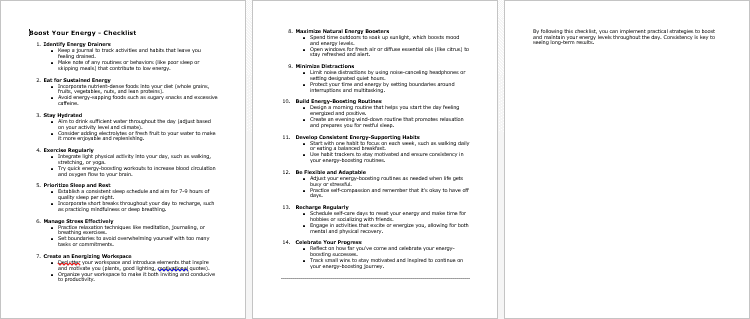
Boost Your Energy – FAQs

Boost Your Energy – Salespage Content
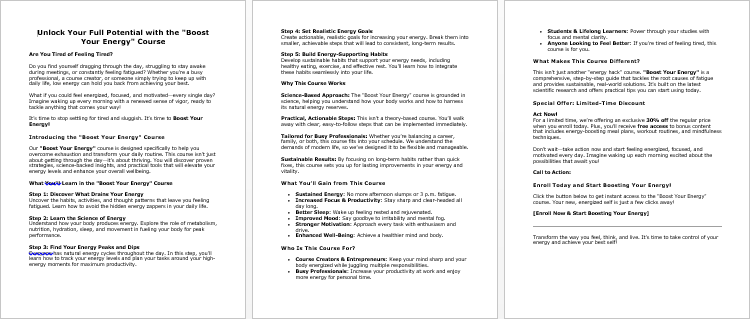
Package Details:
Word Count: 23 577 Words
Number of Pages: 88
Boost Your Energy – Bonus Content
Checklist
Word Count: 501 words
FAQs
Word Count: 930 words
Salespage Content
Word Count: 741 words
Total Word Count: 25 749 Words
Your PLR License Terms
PERMISSIONS: What Can You Do With These Materials?
Sell the content basically as it is (with some minor tweaks to make it “yours”).
If you are going to claim copyright to anything created with this content, then you must substantially change at 75% of the content to distinguish yourself from other licensees.
Break up the content into small portions to sell as individual reports for $10-$20 each.
Bundle the content with other existing content to create larger products for $47-$97 each.
Setup your own membership site with the content and generate monthly residual payments!
Take the content and convert it into a multiple-week “eclass” that you charge $297-$497 to access!
Use the content to create a “physical” product that you sell for premium prices!
Convert it to audios, videos, membership site content and more.
Excerpt and / or edit portions of the content to give away for free as blog posts, reports, etc. to use as lead magnets, incentives and more!
Create your own original product from it, set it up at a site and “flip” the site for megabucks!
RESTRICTIONS: What Can’t You Do With These Materials?
To protect the value of these products, you may not pass on the rights to your customers. This means that your customers may not have PLR rights or reprint / resell rights passed on to them.
You may not pass on any kind of licensing (PLR, reprint / resell, etc.) to ANY offer created from ANY PORTION OF this content that would allow additional people to sell or give away any portion of the content contained in this package.
You may not offer 100% commission to affiliates selling your version / copy of this product. The maximum affiliate commission you may pay out for offers created that include parts of this content is 75%.
You are not permitted to give the complete materials away in their current state for free – they must be sold. They must be excerpted and / or edited to be given away, unless otherwise noted. Example: You ARE permitted to excerpt portions of content for blog posts, lead magnets, etc.
You may not add this content to any part of an existing customer order that would not require them to make an additional purchase. (IE You cannot add it to a package, membership site, etc. that customers have ALREADY paid for.)
Deprecated: Function post_permalink is deprecated since version 4.4.0! Use get_permalink() instead. in /home/buyqualityplr/public_html/wp-includes/functions.php on line 6121
Share Now!

